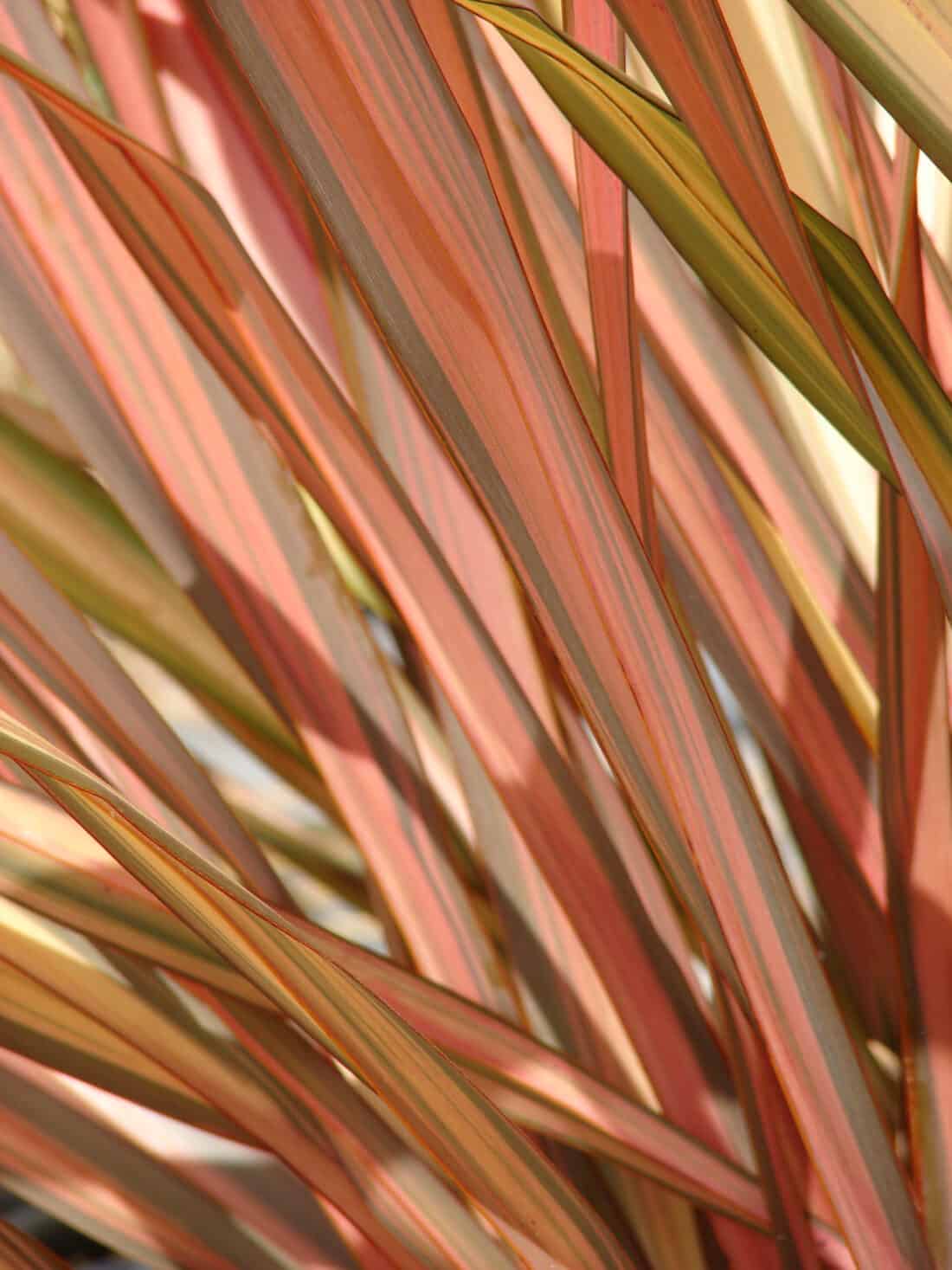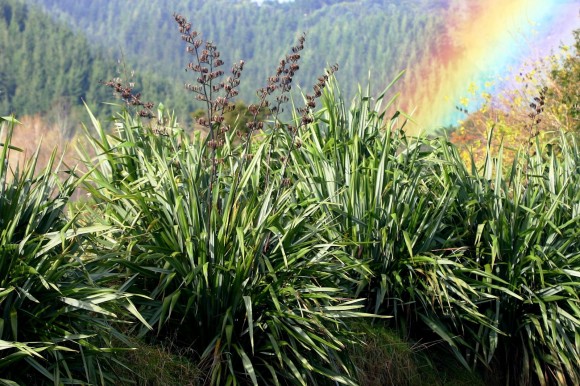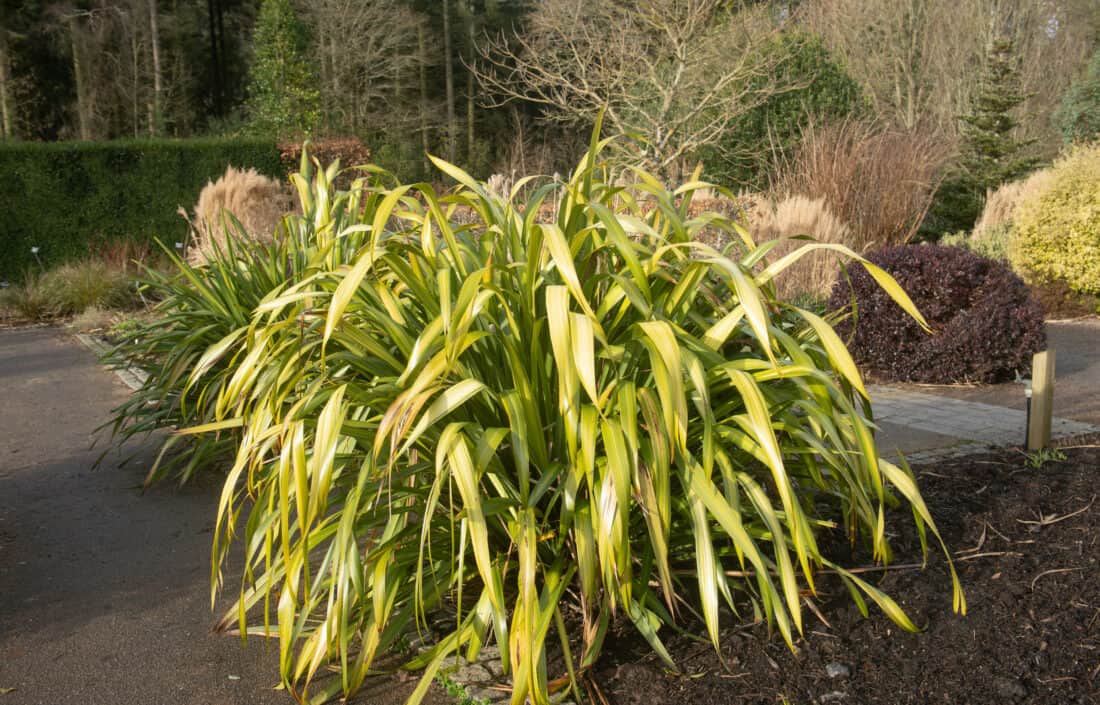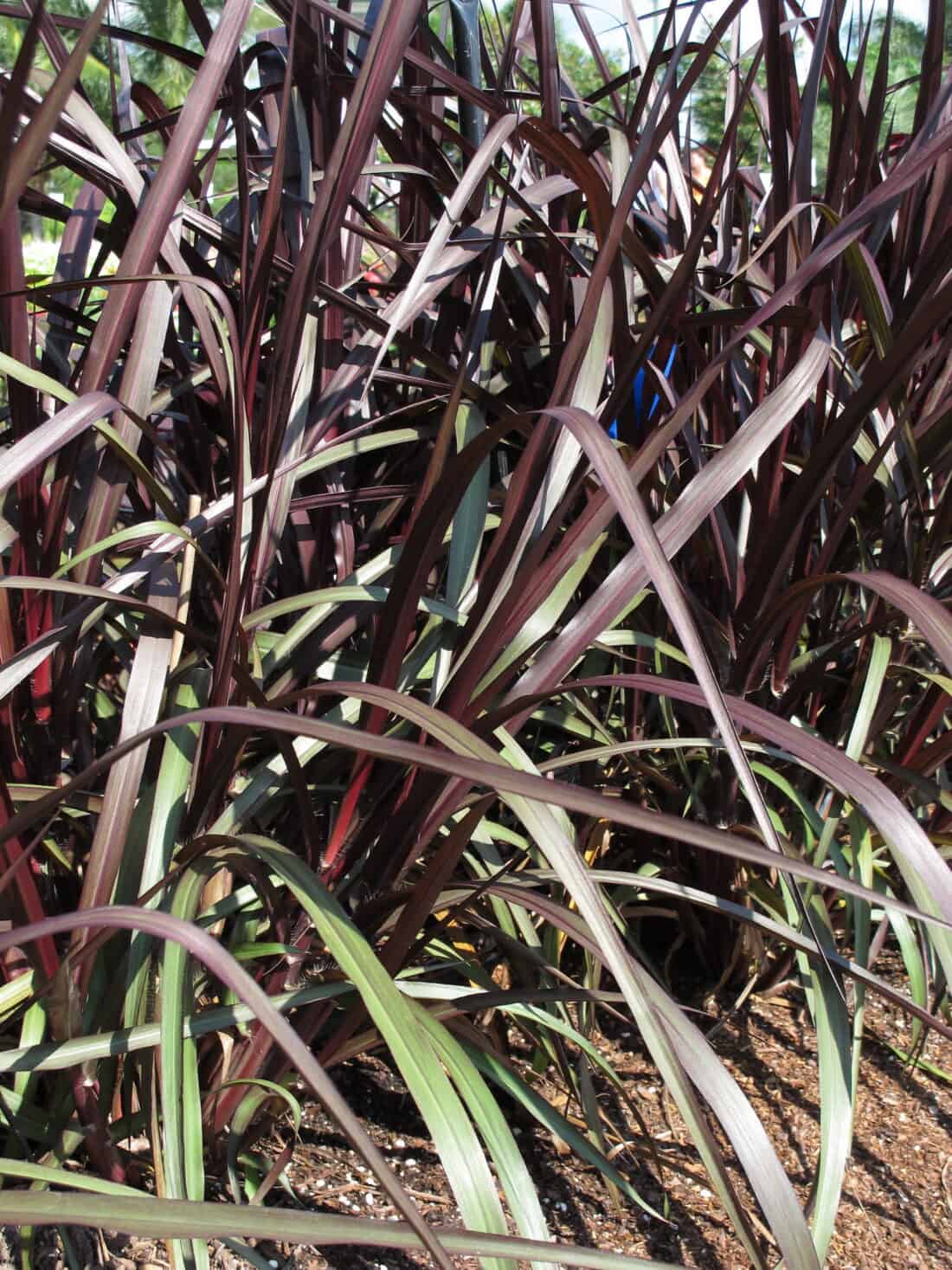The frost has knocked back most of our annuals and perennials here in coastal Maine (USDA zone 6a), but a few really stood up longer than we had expected. This year was odd because even though we waited until late October to change our seasonal beds, we had to remove some annuals that still looked really good. Our gardeners planted close to 23,000 bulbs in their place for a fabulous show next spring. Some of those fantastic-looking annuals I have written about already include Salvia’s ‘Mulberry Jam.’ But now I’m looking ahead to next year and how I can add more unexpected wow to the gardens – and I have Phormium Tenax on my mind.

Now that the temperatures are gradually dipping lower and lower, along with the daylight getting shorter (the sun is setting on the western horizon around 4:30 pm), we are readying our list of winter projects to keep us going until spring returns to Maine.
Probably one of the most important tasks is to design our annual displays for next summer once the bulbs are removed.
The challenge I learned this year is that spring here is slow and draws out from early April until mid-June. Our tulips are done flowering in mid to late May, so we really need plants that can go in while the air and soil are still cool, yet thrive when we reach our summer highs in the mid-80’s to low-90’s.
Yes, you read that right. Summer here in Boothbay rarely has days over the mid-80s. When temperatures here go above 85, the weather folks describe the day as “hot.” I laughed at first, but once you realize that no one has air conditioning to respite from the heat, you understand where they are coming from.
Growing Phormium Tenax in a New England Coastal Garden

New Zealand Flax growing in its native habitat.
Photos: Doug Kalal, Tony Foster
Now that I have described the summer planting design challenges let me tell you what I am thinking and one plant in particular that I really want to bring into the landscape.
We really need something bold to contrast with so many fine-textured annuals, but something different from the canna lilies or bananas that have been used so much in landscapes, and I am worried that they are becoming banal.
Can Phormium Tenax plant grow in New England?
One fantastic plant I have yet to see in New England is Phormium tenax or New Zealand flax. If you live on the West Coast, especially in California, I can already hear your response. Really? I know this New Zealand native has been planted so much along the California coast that one there might think of it as banal as an East Coast canna.
Trust me, the light is different up here at this high latitude, so it will stand out. I can just picture a 5-6′ tall Phormium in the center of a bed. The dark, upright leaves would serve as a wonderful backdrop to our other flowering annuals.

The straight species of New Zealand Flax is attractive, but the variegated Phormium ‘Yellow Queen’ or even the dark Phormium ‘Platt’s Black’ could certainly start a conversation.
I would like to grow it along with Pennisetum ‘Vertigo’ to see how the two compare in our garden.

Phormiums can take full to part sun and are cold hardy down to 15 degrees F and below. The straight P. tenax species is probably the hardiest. When I worked at Plant Delights Nursery in Raleigh, NC, we had a 7′ tall plant that stayed in the garden year-round.
The big challenge is finding plants in Maine or getting them shipped to Boothbay. One of my favorite nurseries in the world, San Marcos Growers, lists 62 different selections of Phormium.
The trouble is that San Marcos is located in Santa Barbara, California. Are any of you planning on driving a moving truck from the central California coast to New England? If so, do you have room for a bunch of wonderful plants?
-Rodney

I’ve been a big fan of Phormium for years and in New England I’ve used it in containers and as an annual. For a more permanent spiky foliage plant I opt for the evergreen Yucca filamentosa. While this plant may pale in comparison to many forms of New Zealand Flax, it offers a hardy (zone 4), long-lived option for a spiky accent plant. Although it is smaller, the yellow variegated Yucca f. ‘Color Guard’ is worthy of consideration too. They are especially useful as an alternative to more fragile shrubs anywhere snow plows pile snow! Here in the Boston area Phormium varieties can be ordered through retailers that are supplied by Monrovia Nurseries. Cheers!